Wastewater Treatment
Biotechnology for Waste and Wastewater Treatment
Views : 15
Biotechnology for Waste and Wastewater Treatment
Source http://www.pumagua.unam.mx/
Edited by Nicholas P. Cheremisinoff, Ph.D.
Usually dispatched in 2 to 3 days
Usually dispatched in 2 to 3 days
Category:
Wastewater Treatment
Only logged in customers who have purchased this product may leave a review.
Related books
Module 13: General Administration of Wastewater Treatment Plants
.List the types of data collected at a plant.
.Analyze typical plant data.
.Describe methods for presenting plant data.
.Explain the frequency and types of reports utilized at a plant.
Module 13: General Administration of Wastewater Treatment Plants
.List the types of data collected at a plant.
.Analyze typical plant data.
.Describe methods for presenting plant data.
.Explain the frequency and types of reports utilized at a plant.
Sewer Design Guide
Abstract:
the Sewer Design Guide is a guide for the engineer when planning and designing wastewater facilities and should be used for both public facilities and private facilities which serve multiple lots. This guide summarizes and outlines relevant City policies, applicable codes, and engineering and operational practices and procedures that have been developed in an effort to establish a cost-effective, reliable, and safe wastewater collection system. Also to be considered and used in conjunction with this design guide are all applicable current standard drawings, specifications, codes, laws and industry requirements for the planning and design of wastewater infrastructures
Sewer Design Guide
Abstract:
the Sewer Design Guide is a guide for the engineer when planning and designing wastewater facilities and should be used for both public facilities and private facilities which serve multiple lots. This guide summarizes and outlines relevant City policies, applicable codes, and engineering and operational practices and procedures that have been developed in an effort to establish a cost-effective, reliable, and safe wastewater collection system. Also to be considered and used in conjunction with this design guide are all applicable current standard drawings, specifications, codes, laws and industry requirements for the planning and design of wastewater infrastructures
Advanced Wastewater Treatment Technologies
Wastewater, also written as waste water, is any water that has been adversely affected in quality by anthropogenic influence. Wastewater can originate from a combination of domestic, industrial, commercial or agricultural activities, surface runoff or storm water, and from sewer inflow or infiltration. Municipal wastewater (also called sewage) is usually conveyed in a combined sewer or sanitary sewer, and treated at a wastewater treatment plant. Treated wastewater is discharged into receiving water via an effluent pipe. Wastewaters generated in areas without access to centralized sewer systems rely on on-site wastewater systems. These typically comprise a septic tank, drain field, and optionally an on-site treatment unit. The management of wastewater belongs to the overarching term sanitation, just like the management of human excreta, solid waste and storm water (drainage). Industrial wastewater is defined as any wastewater generated from any manufacturing,
processing, institutional, commercial, or agricultural operation, or any operation that discharges other
than domestic or sanitary wastewater.
Advanced Wastewater Treatment Technologies
Wastewater, also written as waste water, is any water that has been adversely affected in quality by anthropogenic influence. Wastewater can originate from a combination of domestic, industrial, commercial or agricultural activities, surface runoff or storm water, and from sewer inflow or infiltration. Municipal wastewater (also called sewage) is usually conveyed in a combined sewer or sanitary sewer, and treated at a wastewater treatment plant. Treated wastewater is discharged into receiving water via an effluent pipe. Wastewaters generated in areas without access to centralized sewer systems rely on on-site wastewater systems. These typically comprise a septic tank, drain field, and optionally an on-site treatment unit. The management of wastewater belongs to the overarching term sanitation, just like the management of human excreta, solid waste and storm water (drainage). Industrial wastewater is defined as any wastewater generated from any manufacturing,
processing, institutional, commercial, or agricultural operation, or any operation that discharges other
than domestic or sanitary wastewater.
Chemical Cleaning Of Ultrafiltration Membrane After Treatment Of Oily Wastewater
Abstract:
Oily wastewaters and Oil–in-water emulsions are two of the major pollutants of the environment. Ultrafiltration (UF) membranes play an important role in the treatment and reuse of oily wastewaters. Fouling of UF membranes is typically caused by inorganic and organic materials present in wastewaters that adhere to the surface and pores of the membrane and result in the deterioration of performance with a consequent increase in energy costs and membrane replacement. In the experiments, polyacrylonitrile (PAN) and outlet wastewater of the API (American Petroleum Institute) separator unit of Tehran refinery as membrane and feed were used, respectively. Fouling and cleaning experiments were performed with oily wastewater and selected cleaning agents using a laboratory scale cross flow test unit. The results showed that metal chelating agent (ethylene diamine tetra acetic acid disodium salt-2-hydrate (EDTA)) and an anionic surfactant (sodium dodecyl sulfate (SDS)) were able to Clean the fouled UF membrane effectively by optimizing chemical (pH) and physical
(cleaning time, cross flow velocity (CFV) and temperature) conditions during cleaning. Flux recovery and resistance removal were found to improve with increasing CFV, temperature, pH, cleaning time and concentration of the cleaning chemicals. In this paper, the cleaning mechanism is also investigated.
Chemical Cleaning Of Ultrafiltration Membrane After Treatment Of Oily Wastewater
Abstract:
Oily wastewaters and Oil–in-water emulsions are two of the major pollutants of the environment. Ultrafiltration (UF) membranes play an important role in the treatment and reuse of oily wastewaters. Fouling of UF membranes is typically caused by inorganic and organic materials present in wastewaters that adhere to the surface and pores of the membrane and result in the deterioration of performance with a consequent increase in energy costs and membrane replacement. In the experiments, polyacrylonitrile (PAN) and outlet wastewater of the API (American Petroleum Institute) separator unit of Tehran refinery as membrane and feed were used, respectively. Fouling and cleaning experiments were performed with oily wastewater and selected cleaning agents using a laboratory scale cross flow test unit. The results showed that metal chelating agent (ethylene diamine tetra acetic acid disodium salt-2-hydrate (EDTA)) and an anionic surfactant (sodium dodecyl sulfate (SDS)) were able to Clean the fouled UF membrane effectively by optimizing chemical (pH) and physical
(cleaning time, cross flow velocity (CFV) and temperature) conditions during cleaning. Flux recovery and resistance removal were found to improve with increasing CFV, temperature, pH, cleaning time and concentration of the cleaning chemicals. In this paper, the cleaning mechanism is also investigated.
A Simple Guide To The Chemistry, Selection And Use Of Chemicals For Water And Wastewater Treatment
Introduction
Every year in South Africa an estimated R500m is spent on chemicals used in the treatment of drinking and waste water. Most of this money is allocated on the basis of tenders issued and contracts awarded. The evaluation of tenders is generally undertaken by a team of people from various disciplines within the awarding organization and the decisions they make can have a significant effect on the quality of water or waste that is produced and also on the finances of the organization for which they work. It is obvious therefore that these decisions – which chemicals to use, how much to use, how much should be paid, who is the most professional supplier – are important ones and ones that should be taken whilst in possession of the most factual and impartial information. This guide aims to provide those decision-makers, and other users of water treatment chemicals, with specific and useful information about water treatment chemicals. It is a chemistry text book aimed specifically at those people who have to make informed decisions but who have not had a formal education in chemistry or whose chemistry education has not been specific in detail relevant to water treatment chemicals. It does not, however, aim to be a comprehensive chemistry textbook and chemicals not used in water treatment are not discussed; nor are properties that are irrelevant to the water treatment application of the chemical. The guide is designed to serve as a reference book with each chapter being self contained and specific. It will be easily understood by those readers that do not have a formal chemistry education and hopefully will provide some useful additional insight and information to those that The guide is divided into ten chapters and includes an appendix at the end that contains various useful equations. The contents of each chapter are listed below.
A Simple Guide To The Chemistry, Selection And Use Of Chemicals For Water And Wastewater Treatment
Introduction
Every year in South Africa an estimated R500m is spent on chemicals used in the treatment of drinking and waste water. Most of this money is allocated on the basis of tenders issued and contracts awarded. The evaluation of tenders is generally undertaken by a team of people from various disciplines within the awarding organization and the decisions they make can have a significant effect on the quality of water or waste that is produced and also on the finances of the organization for which they work. It is obvious therefore that these decisions – which chemicals to use, how much to use, how much should be paid, who is the most professional supplier – are important ones and ones that should be taken whilst in possession of the most factual and impartial information. This guide aims to provide those decision-makers, and other users of water treatment chemicals, with specific and useful information about water treatment chemicals. It is a chemistry text book aimed specifically at those people who have to make informed decisions but who have not had a formal education in chemistry or whose chemistry education has not been specific in detail relevant to water treatment chemicals. It does not, however, aim to be a comprehensive chemistry textbook and chemicals not used in water treatment are not discussed; nor are properties that are irrelevant to the water treatment application of the chemical. The guide is designed to serve as a reference book with each chapter being self contained and specific. It will be easily understood by those readers that do not have a formal chemistry education and hopefully will provide some useful additional insight and information to those that The guide is divided into ten chapters and includes an appendix at the end that contains various useful equations. The contents of each chapter are listed below.
Adsorption And Biological Filtration In Wastewater Treatment
Over the last few decades adsorption has gained paramount importance in industry and environmental protection. Adsorption processes are widely applied for separation and purification because of the high reliability, energy efficiency, design flexibility, technological maturity and the ability to regenerate the exhausted adsorbent. One method of important extending the adsorption treatment processes is biofiltration. The biological filter relies on the activities of the community of micro-organisms that become attached onto the filter media. Microbes oxidize organic matters in water to produce energy and therefore available nutrients sources in feed water are essential for their development. Biofiltration can effectively remove organic matter that is not able to be removed from water and biologically treated sewage effluent in conventional sewage treatment. The microbial attachment process, the factors that influence biological filtration, the kinetics of microbial growth and details of the microbial community in the biofilter are discussed in detail. There are several types of biofilters including submerged filters, trickling filter, bed filter, fluidised bed. The different biofilters are described and a comparison between them is provided. The application of biofilters for treating various types of wastewater effluent is detailed.
Adsorption And Biological Filtration In Wastewater Treatment
Over the last few decades adsorption has gained paramount importance in industry and environmental protection. Adsorption processes are widely applied for separation and purification because of the high reliability, energy efficiency, design flexibility, technological maturity and the ability to regenerate the exhausted adsorbent. One method of important extending the adsorption treatment processes is biofiltration. The biological filter relies on the activities of the community of micro-organisms that become attached onto the filter media. Microbes oxidize organic matters in water to produce energy and therefore available nutrients sources in feed water are essential for their development. Biofiltration can effectively remove organic matter that is not able to be removed from water and biologically treated sewage effluent in conventional sewage treatment. The microbial attachment process, the factors that influence biological filtration, the kinetics of microbial growth and details of the microbial community in the biofilter are discussed in detail. There are several types of biofilters including submerged filters, trickling filter, bed filter, fluidised bed. The different biofilters are described and a comparison between them is provided. The application of biofilters for treating various types of wastewater effluent is detailed.
Module 16 : Activated Sludge Process- Part 2
•List the key monitoring points within the activated sludge process and explain what to look for at those points.
•List five key process control parameters and for each parameter, explain what it is, why it is used and how it is calculated
•List the daily process control tasks that need to be accomplished and explain how to perform them.
Module 16 : Activated Sludge Process- Part 2
•List the key monitoring points within the activated sludge process and explain what to look for at those points.
•List five key process control parameters and for each parameter, explain what it is, why it is used and how it is calculated
•List the daily process control tasks that need to be accomplished and explain how to perform them.
Advanced Treatment Technologies For Recycle/Reuse Of Domestic Wastewater
Conventional wastewater treatment technologies improve the quality of wastewater discharged into the environment and restrain polluted waters from contaminating other available clean water resources. However, these treatment technologies do not make wastewater fit for further beneficial uses in communities closer to the points of generation. Innovative and advanced technologies that can further improve the quality of wastewater are needed to overcome this limitation of conventional technologies, and to promote widespread adoption of recycle and reuse practices. Advanced treatment processes can be biological processes, physicochemical processes, or a combination of both (hybrid processes). Biological processes to remove nutrient pollutants such as nitrogen and phosphorus, provide the platform for further wastewater treatment to reusable quality. Physicochemical processes such as deep-bed filtration, floating media filtration, and membrane filtration, play a major role among treatment technologies for water reuse. Membrane filtration has significant advantages over other processes since they produce high quality effluent that requires little or no disinfection with minimum sludge generation. The hybrid processes attempt to obtain the benefits of both biological and physicochemical processes in one step.
Advanced Treatment Technologies For Recycle/Reuse Of Domestic Wastewater
Conventional wastewater treatment technologies improve the quality of wastewater discharged into the environment and restrain polluted waters from contaminating other available clean water resources. However, these treatment technologies do not make wastewater fit for further beneficial uses in communities closer to the points of generation. Innovative and advanced technologies that can further improve the quality of wastewater are needed to overcome this limitation of conventional technologies, and to promote widespread adoption of recycle and reuse practices. Advanced treatment processes can be biological processes, physicochemical processes, or a combination of both (hybrid processes). Biological processes to remove nutrient pollutants such as nitrogen and phosphorus, provide the platform for further wastewater treatment to reusable quality. Physicochemical processes such as deep-bed filtration, floating media filtration, and membrane filtration, play a major role among treatment technologies for water reuse. Membrane filtration has significant advantages over other processes since they produce high quality effluent that requires little or no disinfection with minimum sludge generation. The hybrid processes attempt to obtain the benefits of both biological and physicochemical processes in one step.
Module 15: The Activated Sludge Process – Part 1
•Describe the activated sludge process and its control variables.
•List List three types of activated sludge treatment plants.
Module 15: The Activated Sludge Process – Part 1
•Describe the activated sludge process and its control variables.
•List List three types of activated sludge treatment plants.


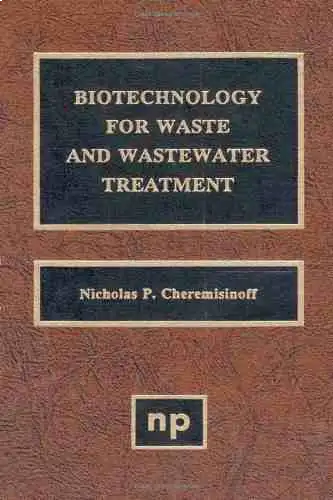
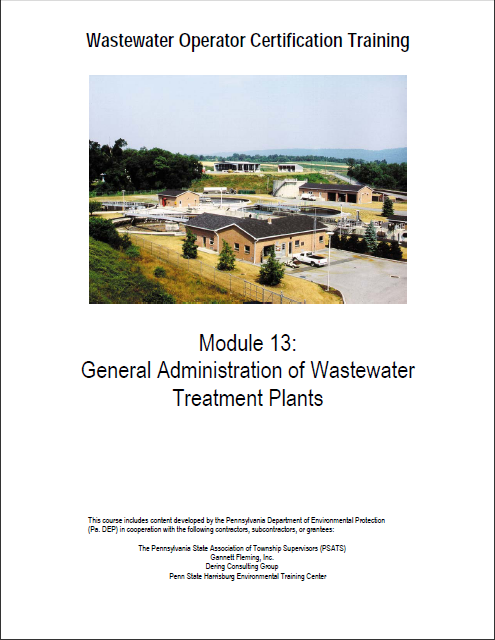
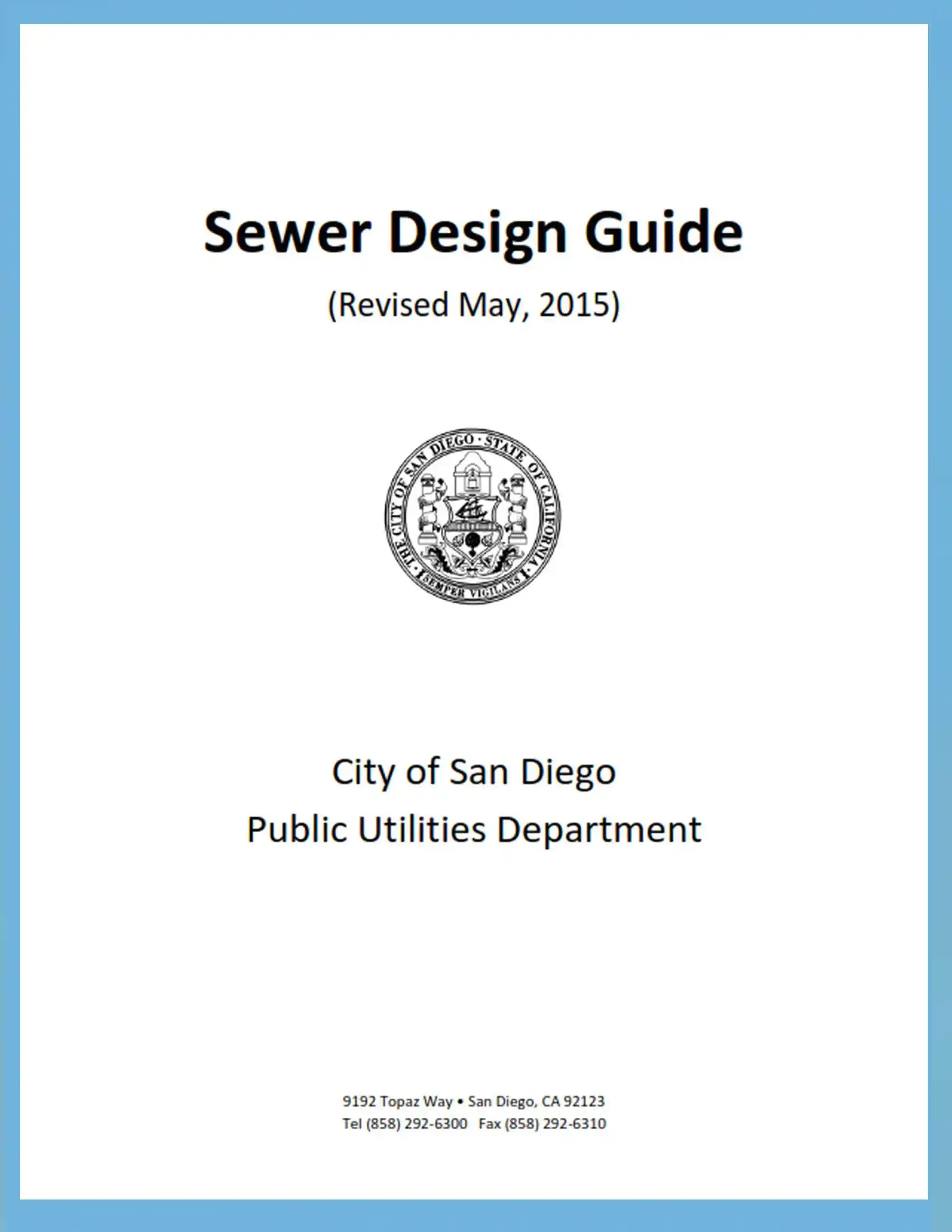

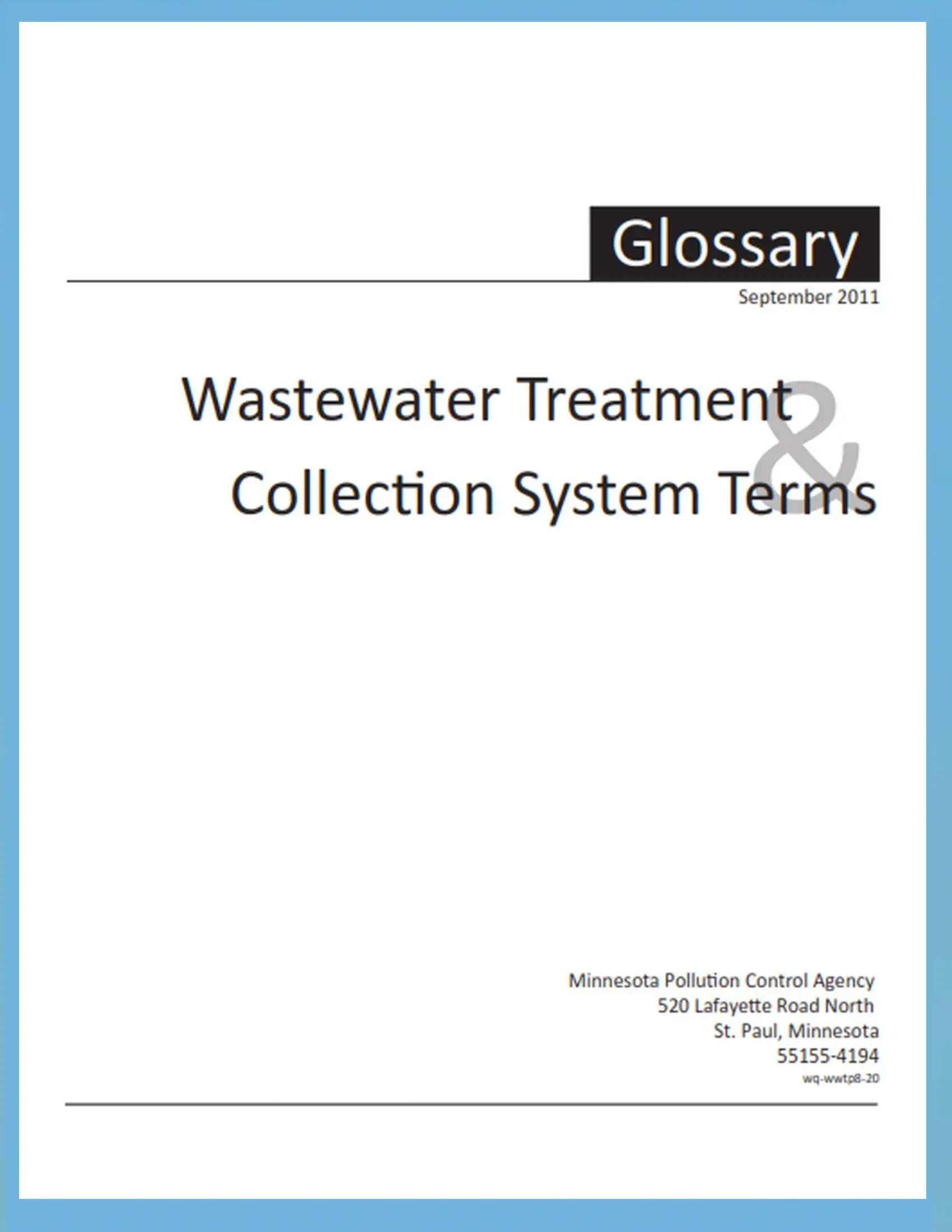
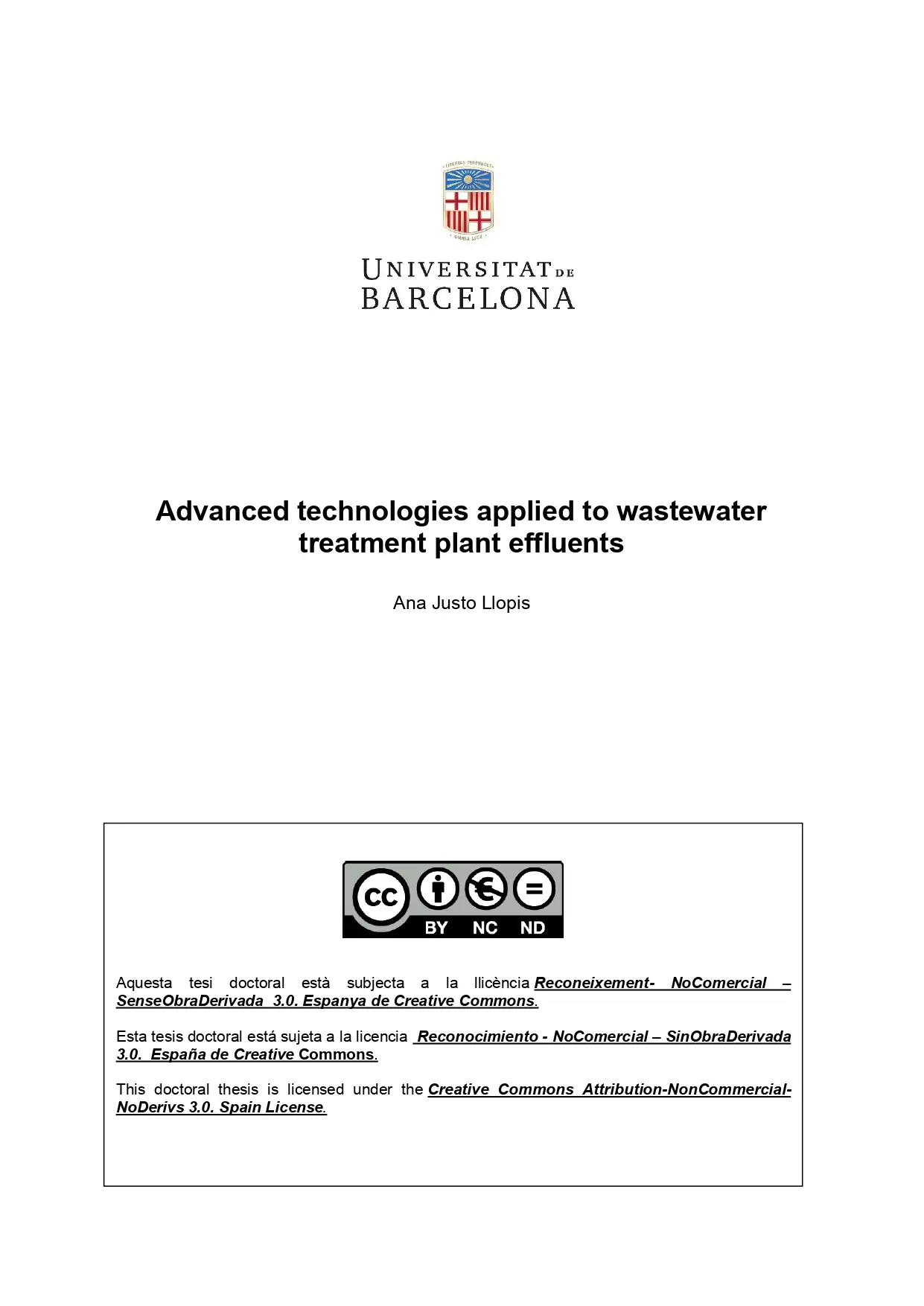
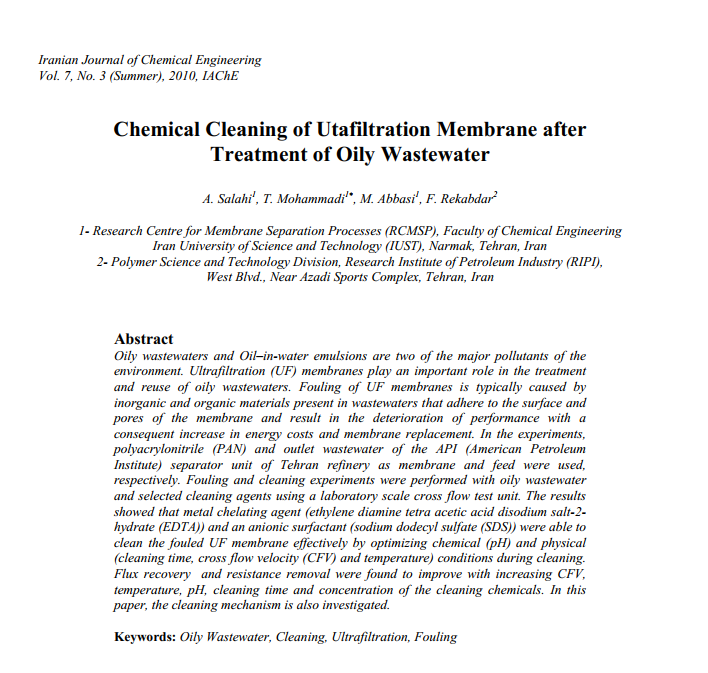
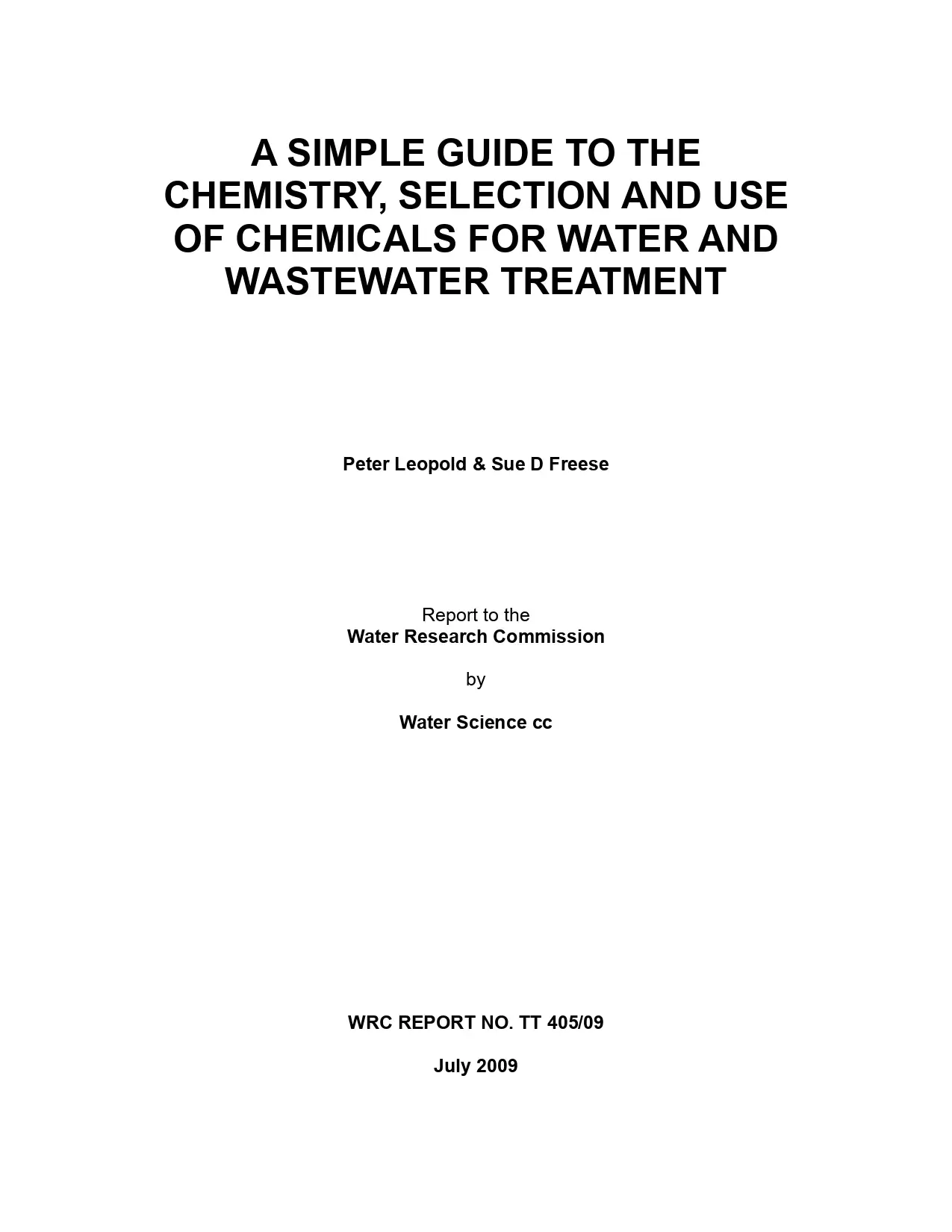
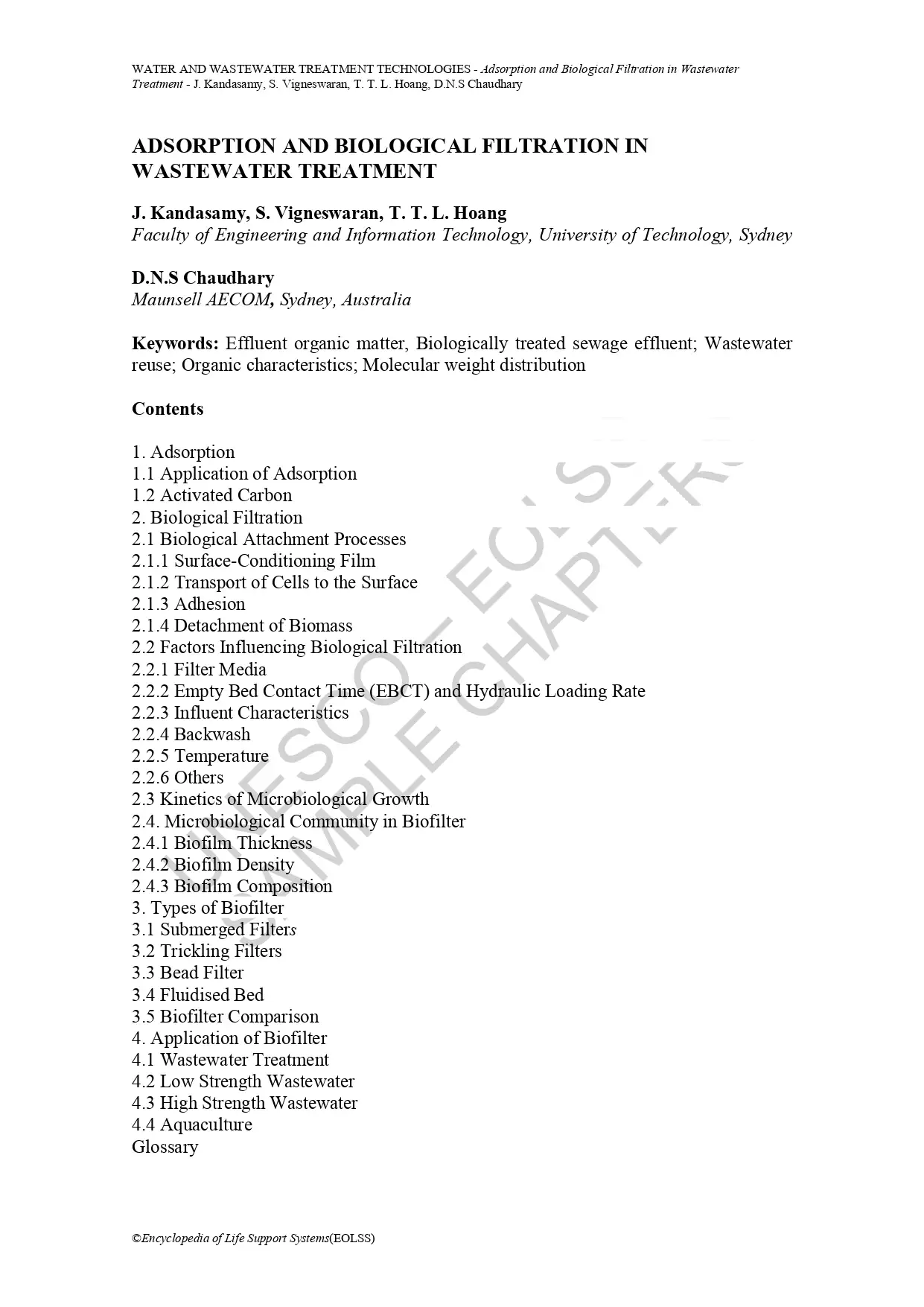
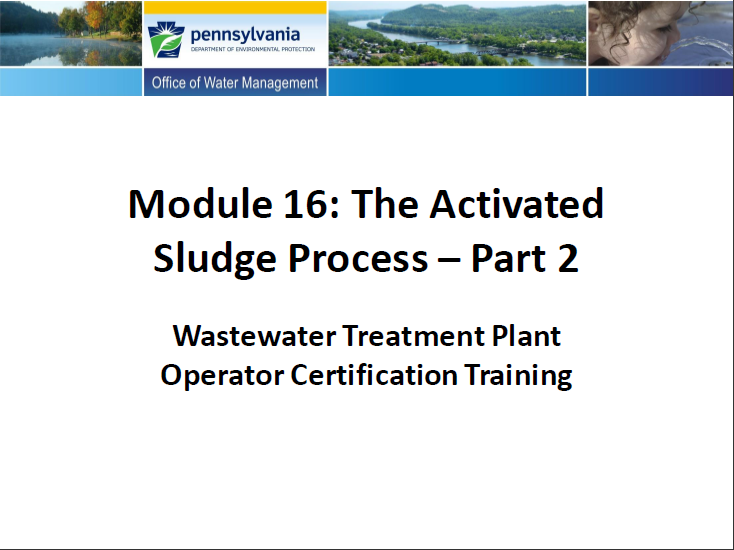
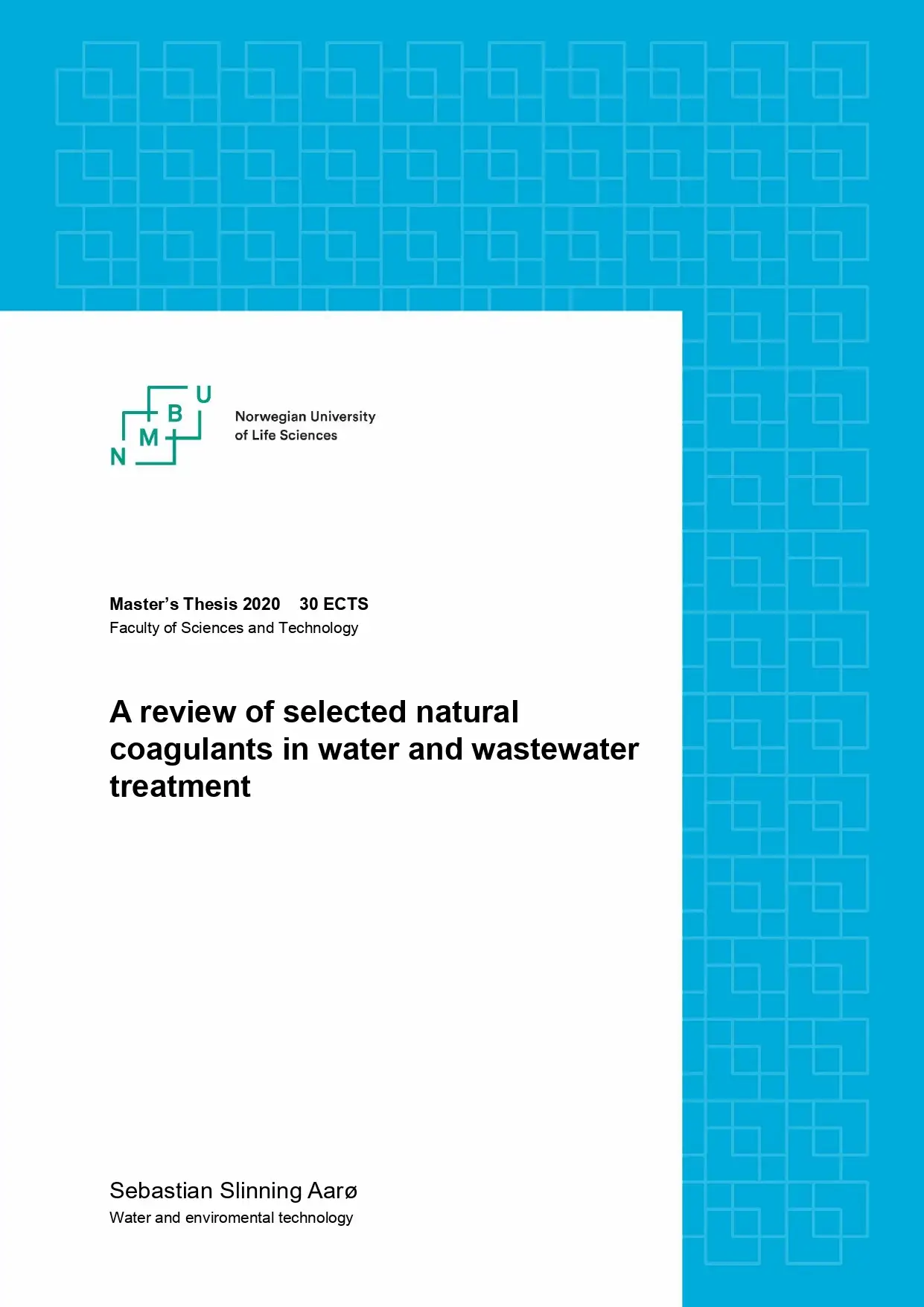
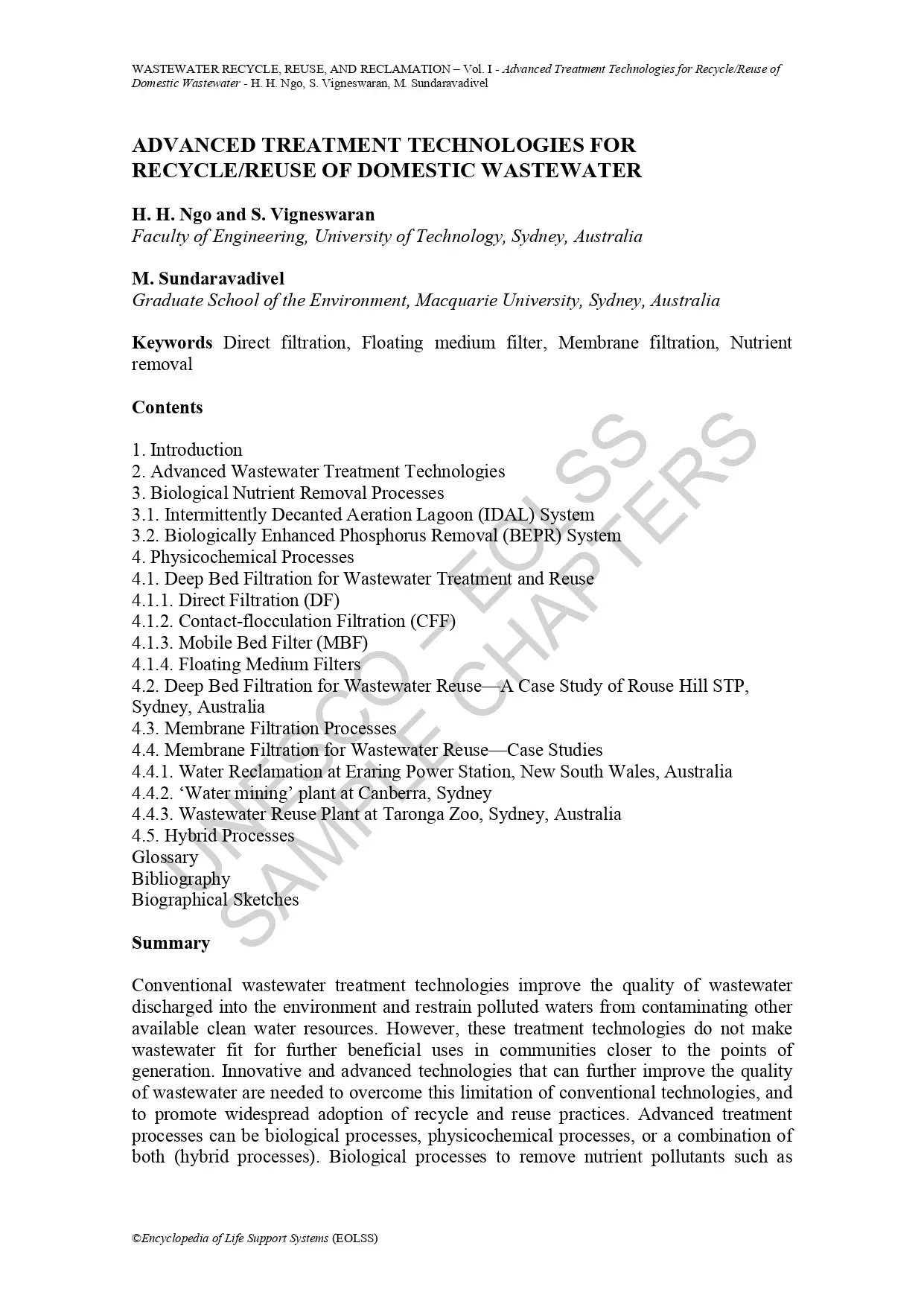
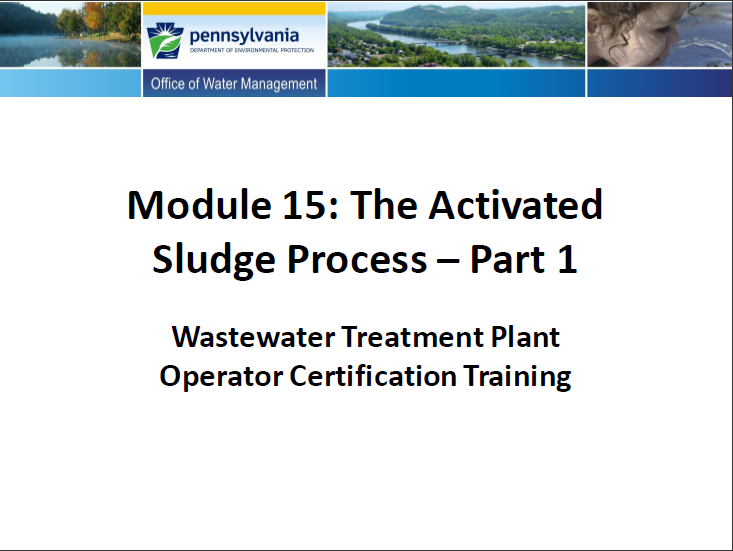
Reviews
There are no reviews yet.